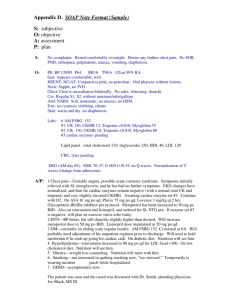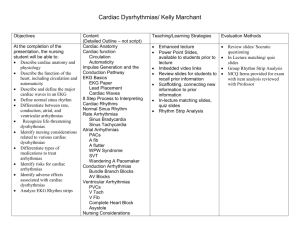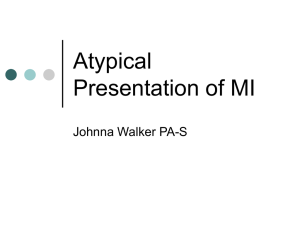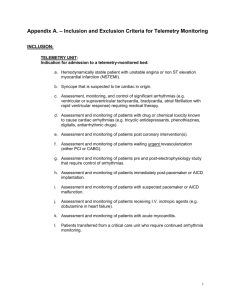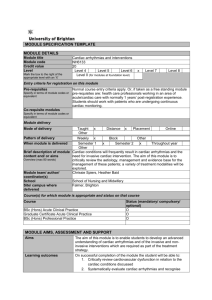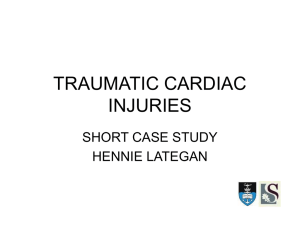Blunt Cardiac Injury Guideline
advertisement
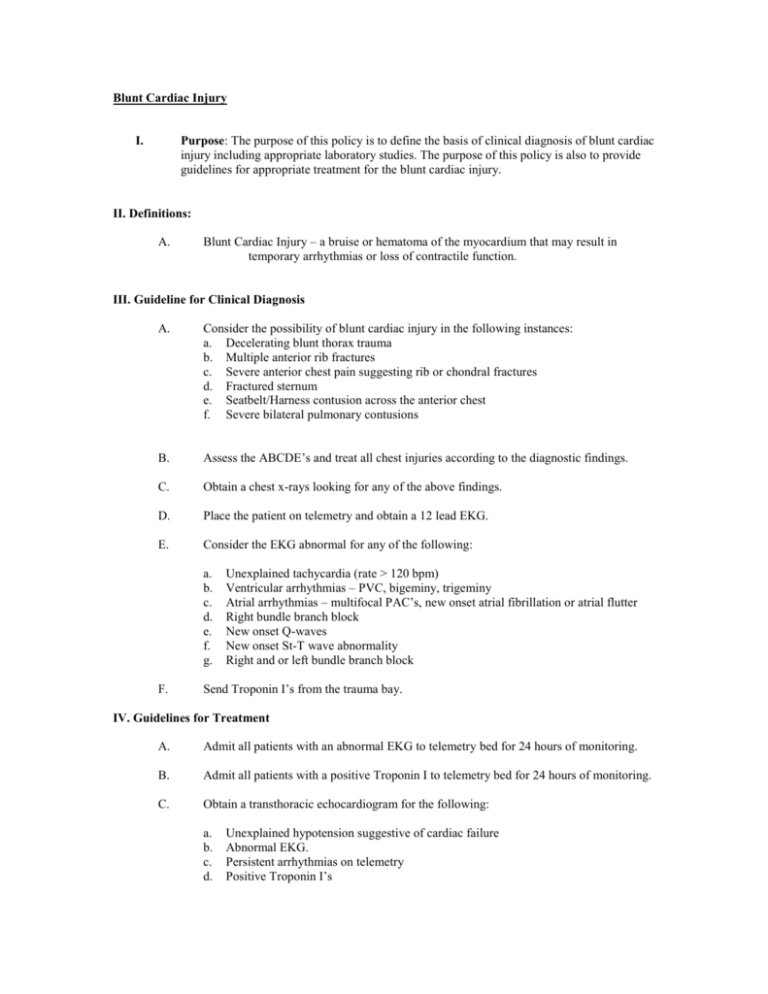
Blunt Cardiac Injury I. Purpose: The purpose of this policy is to define the basis of clinical diagnosis of blunt cardiac injury including appropriate laboratory studies. The purpose of this policy is also to provide guidelines for appropriate treatment for the blunt cardiac injury. II. Definitions: A. Blunt Cardiac Injury – a bruise or hematoma of the myocardium that may result in temporary arrhythmias or loss of contractile function. III. Guideline for Clinical Diagnosis A. Consider the possibility of blunt cardiac injury in the following instances: a. Decelerating blunt thorax trauma b. Multiple anterior rib fractures c. Severe anterior chest pain suggesting rib or chondral fractures d. Fractured sternum e. Seatbelt/Harness contusion across the anterior chest f. Severe bilateral pulmonary contusions B. Assess the ABCDE’s and treat all chest injuries according to the diagnostic findings. C. Obtain a chest x-rays looking for any of the above findings. D. Place the patient on telemetry and obtain a 12 lead EKG. E. Consider the EKG abnormal for any of the following: a. b. c. d. e. f. g. F. Unexplained tachycardia (rate > 120 bpm) Ventricular arrhythmias – PVC, bigeminy, trigeminy Atrial arrhythmias – multifocal PAC’s, new onset atrial fibrillation or atrial flutter Right bundle branch block New onset Q-waves New onset St-T wave abnormality Right and or left bundle branch block Send Troponin I’s from the trauma bay. IV. Guidelines for Treatment A. Admit all patients with an abnormal EKG to telemetry bed for 24 hours of monitoring. B. Admit all patients with a positive Troponin I to telemetry bed for 24 hours of monitoring. C. Obtain a transthoracic echocardiogram for the following: a. b. c. d. Unexplained hypotension suggestive of cardiac failure Abnormal EKG. Persistent arrhythmias on telemetry Positive Troponin I’s D. E. F. Patients with blunt cardiac injury may undergo anesthesia if properly monitored during the operation. CPK isoenzymes are not useful for predicting which patients have or will have complications related to blunt cardiac injury. If a patient has persistent myocardial dysfunction: a. Obtain a cardiology consult b. Treat arrhythmias according to ACLS c. Treat any cardiac failure with inotropes, and consider concurrent placement of a pulmonary artery catheter. d. Do not place a pulmonary artery catheter in patients with a left bundle branch block.
